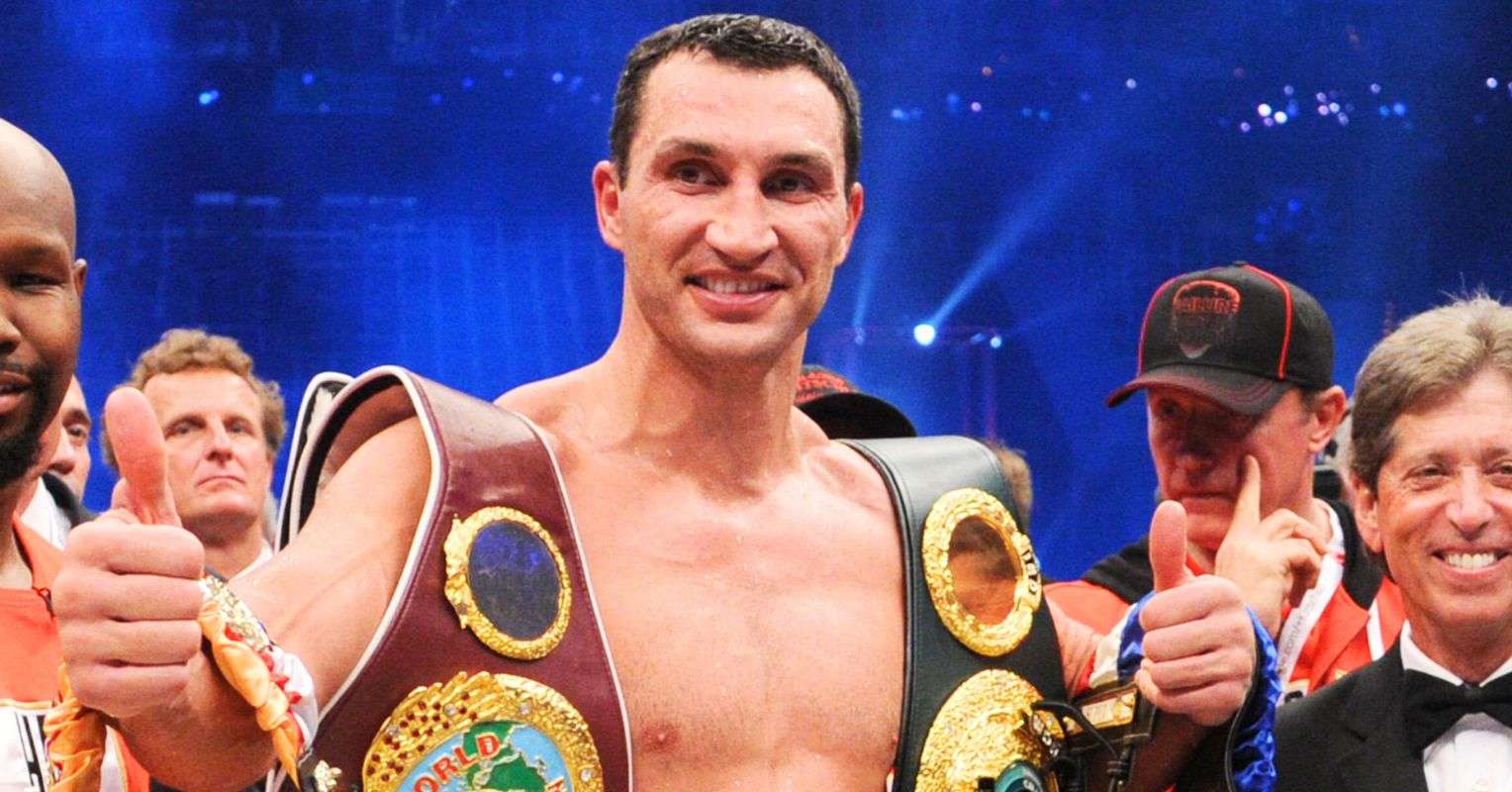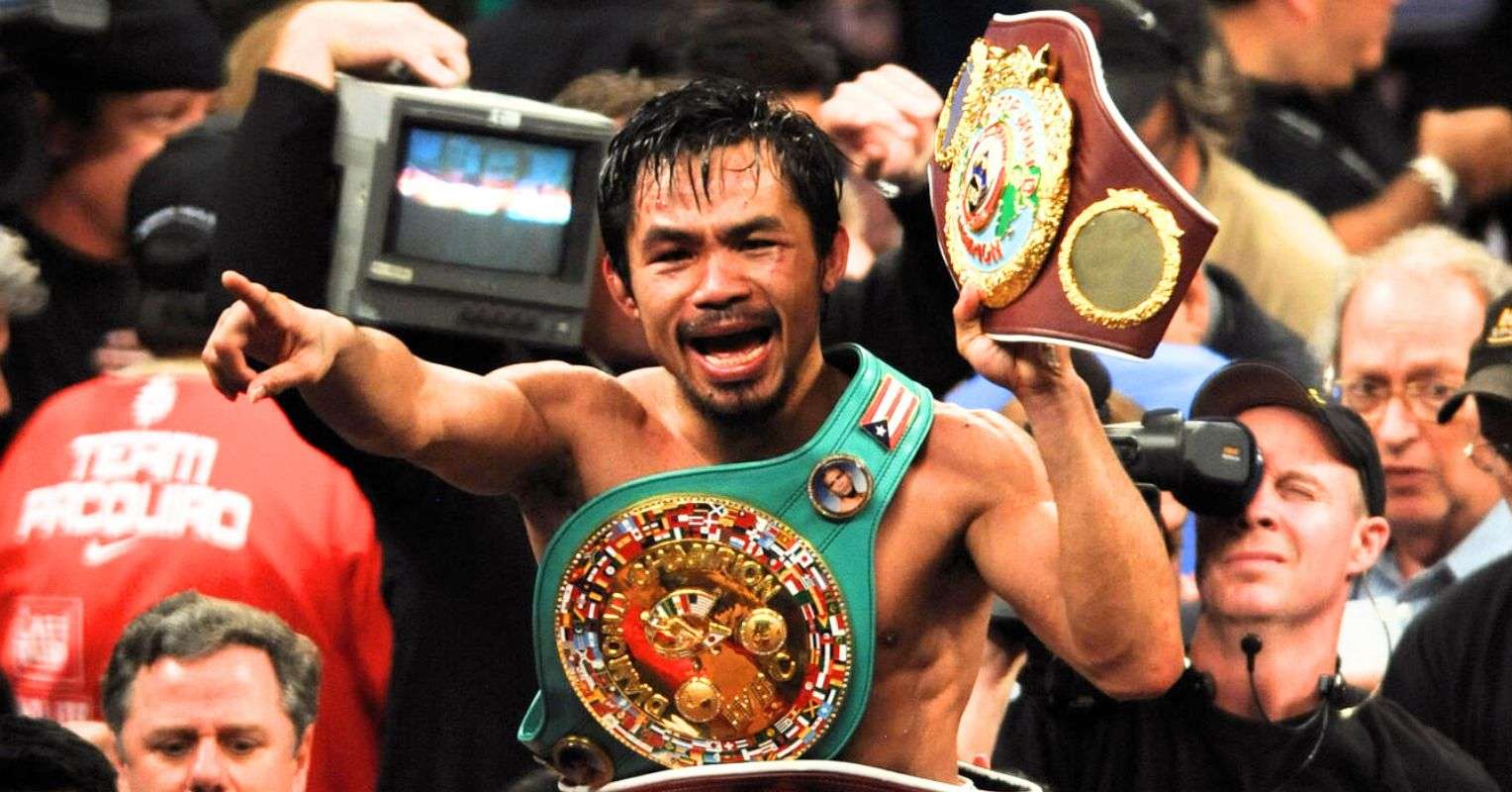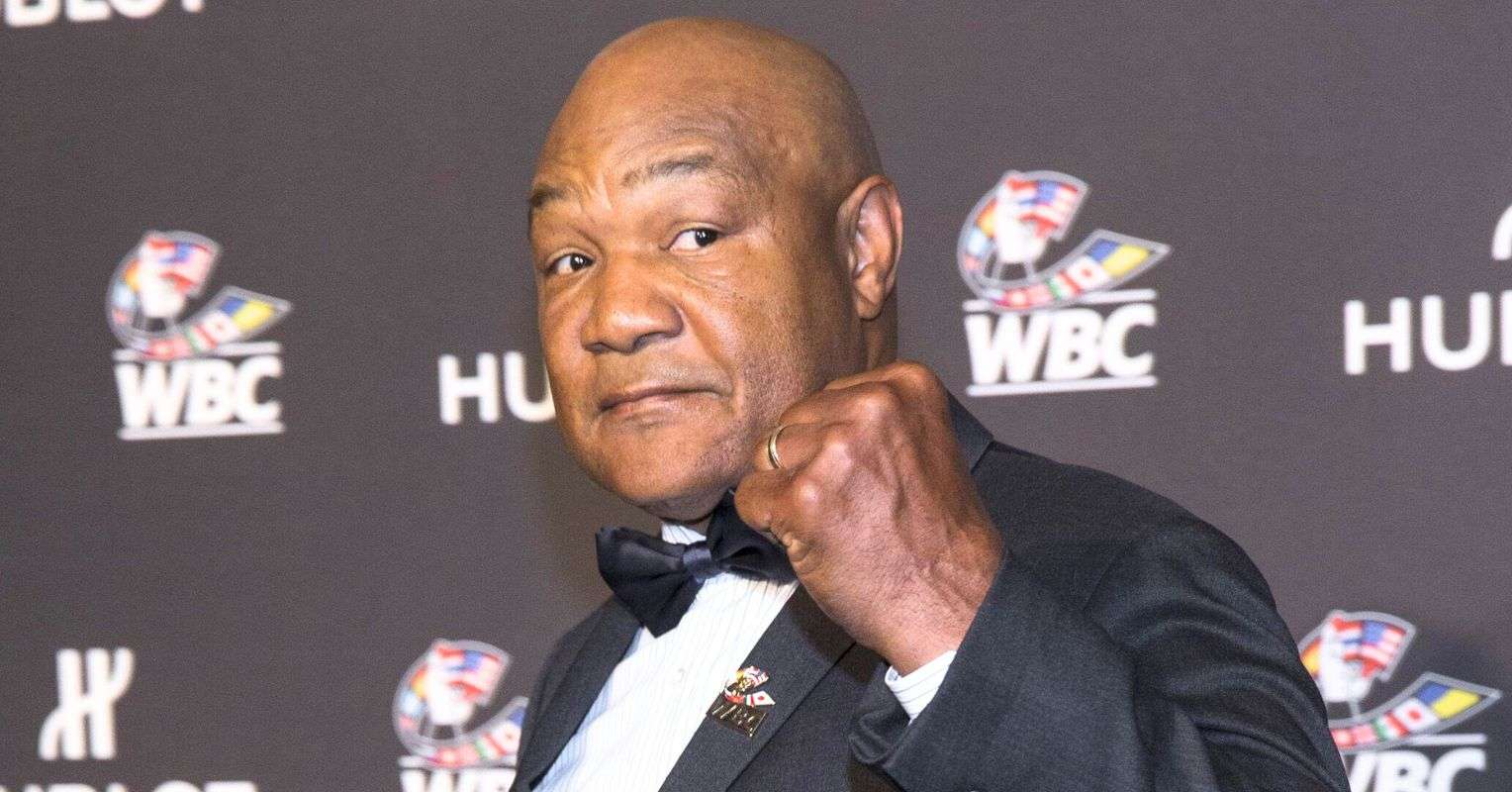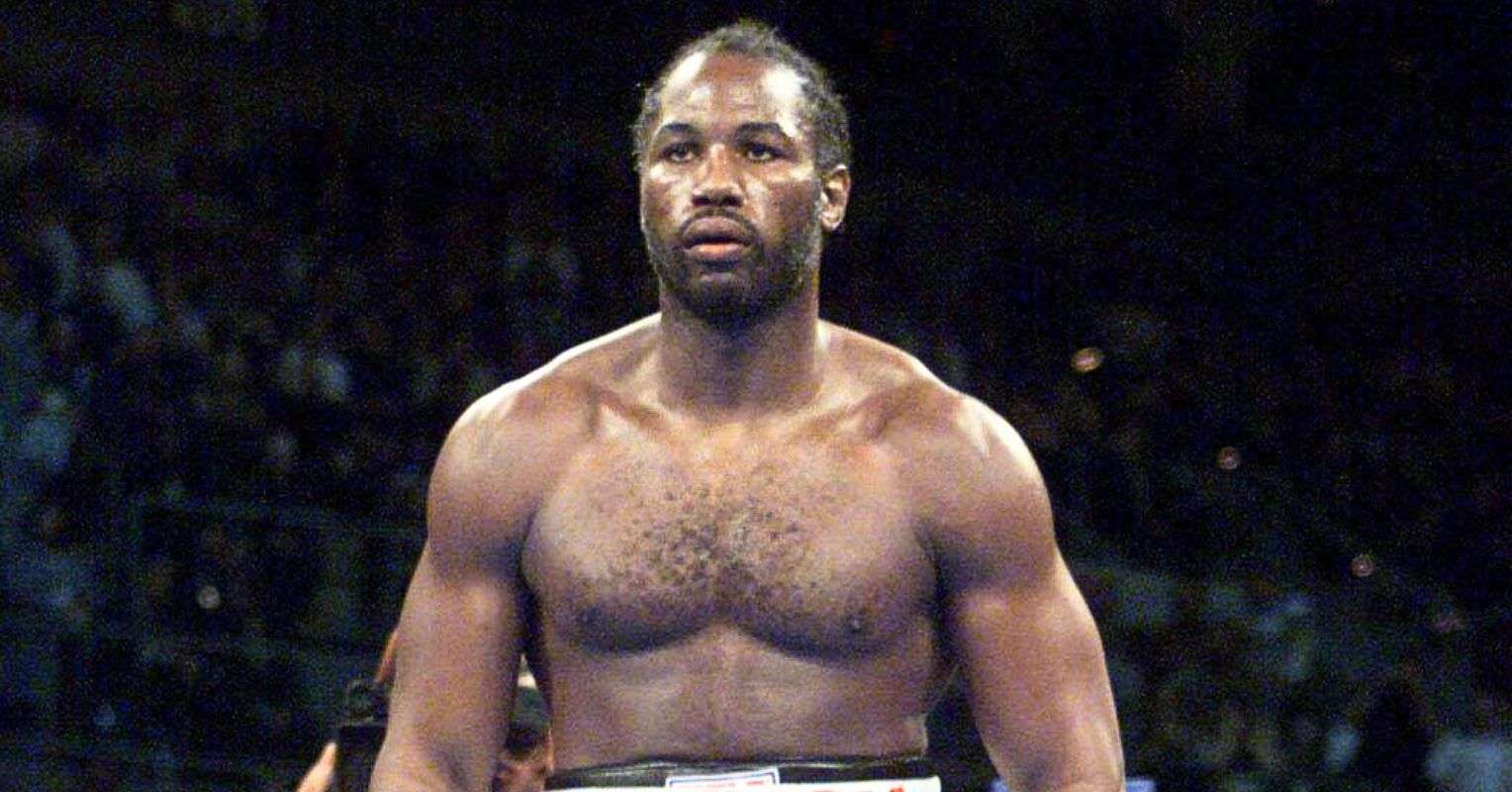Throughout the course of boxing history, we’ve seen numerous boxers have a period in their careers where everything clicks and it usually signals that they’re at the top of their game. It could be a run so highly-noted that a fighter could get into the Hall of Fame just based off what they did in that span.
In that stretch, a fighter is in the best form of their career or still fighting at close to that level. Belts are won. Maybe even multiple world titles are won in different weight classes. Title defenses are made. Consecutive title defenses matter. Pound-for-Pound status plays a factor, as well.
Tough competition faced and top-level fighters beaten comes into play. Being named Fighter of the Year helps your case. The overall impact and historical significance are major incentives for accessing just how good that run was.
What am I getting at?
Let’s objectively rank the best three-year runs by a fighter in boxing history based on all the above points.
There are no qualifiers for this list. If a fighter deserves to be in the top 12 twice, then so be it. I’m anticipating plenty of disputes ahead.
12. Salvador Sanchez (1980-82): 11-0 record
Roberto Duran’s run at Lightweight from 1976-78 was strongly considered for the 12th spot, but I couldn’t overlook the tremendous work Salvador Sanchez did from 1980-82 at Featherweight.
The boxing world lost the man they called “Chava” way too early at age 23 in a car accident in August 1982, but before he left us, the young Mexican put together three years that would have been solely worthy of Hall of Fame consideration. At the height of his career, no less.
Always in the high-spirited conversation of best Mexican fighters ever, Sanchez won 11 straight title fights at 126, where he held the WBC and lineal Featherweight belts.
Along his brief but grand run, he defeated Hall of Famers and Featherweight champions Danny “Little Red” Lopez (twice), Wilfredo Gomez and Azumah Nelson, strong contenders like Ruben Castillo and Juan Laporte, and won 1981 Ring Magazine Fighter of the Year honors, alongside Sugar Ray Leonard.
Sanchez’s reign at 126 wasn’t long, but you won’t find many three-year runs in the history of the fight game as impressive.
11. Marvelous Marvin Hagler (1983-85): 6-0 record
Widely viewed as the best fighter in the 160-pound division for years in the late-1970s before he could secure a title shot, the physically built and brute force that Marvin Hagler was in the ring was somehow always overlooked, unappreciated and never got the due respect he so desired from the media and among boxing circles.
Even when he became undisputed Middleweight champion in 1980, made forceful title defenses and was neck and neck with Sugar Ray Leonard for the crown of “Best Pound-for-Pound Fighter” in the sport, there was still a certain hunger and determination inside of Hagler to prove that he was not only a truly great fighter, but also a universal star, the likes of what Ray Leonard transformed into.
The period of 1983-85 is when Hagler was able to show the world just how great he was. The big fights that The Marvelous One eagerly seeked, finally came his way. After smacking down Tony Sibson and Wilford Scypion in early 1983, Hagler’s first mega fight arrived that November against Roberto Duran, which he won in a competitive 15-round tussle, to earn Ring Magazine Fighter of the Year.
1984 saw Hagler continue his assault on the Middleweight division going 2-0, then in 1985, his showdown with Thomas Hearns–who was moving up from conquering the Junior Middleweight division and a top two pound-for-pound fighter, next to Hagler–proved to be his greatest triumph. In a three-round spectacle, Hagler TKO’d Hearns to retain his WBA, WBC, IBF, The Ring, and Lineal Middleweight titles, was named Fighter of the Year again and staunchly entrenched himself as an all-time great.
10. Gene Tunney (1925-27): 9-0 record
One of the five best Light Heavyweight boxers ever and though he never got the opportunity to win a world title at Light Heavyweight, Tunney still governed over the 175-pound division for the majority of the 1920s, defeating fellow greats like George Carpenter, Battling Levinsky, Tommy Loughran and Jeff Smith.
The very-skilled clean-cut boxer with nimble footwork and quick-fisted jabs showed he could also bang and take part in free-for-all brawls with more-known sluggers.
Yet, it was Tunney’s five-fight Light Heavyweight series versus the smaller and natural Middleweight titleholder Harry Greb that raised his profile and served as a keen indicator of the American’s deft quality.
In 1925, he capped off the rivalry (Tunney finished 3-1-1 against Greb) by decisively beating Greb and later in the year, stopped top Heavyweight contender Tommy Gibbons in a measuring stick fight that convinced the boxing world he was ready for Jack Dempsey, the Heavyweight champion of the world.
Tunney did just that in 1926, moving up to claim the Heavyweight title from the perceived indestructible Dempsey. He then successfully defended the title against Dempsey in 1927, in the famous “Long Count” bout.
For a Light Heavyweight fighter like Tunney to defeat a force of nature, Heavyweight champion of Dempsey’s caliber twice, has to be considered one of the biggest wins ever by a Heavyweight fighter. That’s one three-year run that holds up pretty well decades later.
9. Harry Greb (1922-24): 28-4-2 record
Trying to crack down a three-year run that sticks out with Harry Greb, proved to be a difficult task. Recognized as arguably the best Middleweight fighter ever and a pound-for-pound giant historically, assessing through Greb’s career professional record proves tricky because it’s unclear exactly how many fights he fought, won, loss or drew in.
If you’re looking for Greb’s best calendar year, 1919 might be it, when he completed a 45-0 campaign, according to BoxRec records.
However, I settled on his 1922-24 stint, while regrettably leaving out his 1925 year, where he went 18-1 and defeated Middleweight great Mickey Walker in Ring Magazine’s Fight of the Year.
During those three years, “The Pittsburgh Windmill” won the American Light Heavyweight title (from Gene Tunney in 1922, while also losing twice and drawing once with the much bigger Tunney), was the world Middleweight champion (won the title in 1923) where he made three title defenses and defeated Hall of Famers in all-time Middleweight great Tiger Flowers, Light Heavyweight standout Tommy Loughran (four times) and Heavyweight contender Tommy Gibbons.
Greb’s success fighting at 160, 175 and against bigger fighters is one of the main reasons why he’s remembered so fondly in the history books. This run showed it.
8. Joe Louis (1937-39): 12-0 record
No Heavyweight in history had a longer title reign than Joe Louis and his record 25 successful title defenses in 12 years, yet it was his three years from 1937-39 where his assertive dominance was on full display for the world to discern.
Operating at the height of his ability, Louis wrecked everything in front of him, as he knocked out 10 of his 12 opponents in this period with his incredible patience, timing, ring savvy and punching power in both hands leading the way.
Nicknamed “The Brown Bomber,” Louis wasn’t just the premier Heavyweight of his time, but also served as a symbol of hope for Black America during an epoch of unsettling angst for both African Americans and the United States.
He first became Heavyweight champion by defeating “Cinderella Man” James J. Braddock in 1937, got the better of top foes Tommy Farr, John Henry Lewis and Bob Pastor, though it was Louis’ rematch bout with Germany’s Max Schmeling in 1938 (his first loss was to Schmeling in 1936) that was unquestionably a landmark event not only in sports and American history, but world history as well, due to the political agenda conducted by the Nazi Party led by Adolf Hitler.
Louis demolished Schmeling in one round that night and became a national hero.
To elucidate just how wonderful this run was for Louis, he won Ring Magazine Fighter of the Year in 1938 and 1939, and was involved in Fight of the Year in 1937 and 1938.
7. Ezzard Charles (1948-50): 15-0 record
Dubbed the greatest of all the Light Heavyweight fighters, try evaluating Ezzard Charles’ career at three weight classes and many will see its quite astonishing.
In my book, he has one of the 10 best resumes in boxing history. Before his supreme three-year run, Charles had already made head waves prior, where at 160, he beat Middleweight all-timer Charley Burley twice, eventual world Light Heavyweight champion Joey Maxim twice, arguable top three all-time Light Heavyweight Archie Moore twice, plus both Jimmy Bivins and Lloyd Marshall twice.
From 1948-50, “The Cincinnati Cobra” could do no wrong. Charles beat Moore for a third and final time. He beat Maxim and Bivins both for the third time. He beat former Light Heavyweight champion Gus Lesnevich at Heavyweight.
In a first of four bouts, he seized the Heavyweight title from Jersey Joe Walcott in 1949 and in a showcase bout in 1950–versus the aging but one-and-only Joe Louis that gave him more widespread attention–Charles defended and unified Heavyweight belts from his idol.
In these three years, Charles made five Heavyweight title defenses, took home Fighter of the Year honors in 1949 and 1950 and it was this run that I believe fully lifted Charles into many historians’ 10-15 greatest pound-for-pound fighters ever lists’.
6. Willie Pep (1947-49): 35-1 record
Poetry in motion would be the best way to describe the style that Wille Pep employed in the ring. Possessing artful footwork, slippery defense, rabbit-like quickness and the ability to beautifully outbox his adversaries, Pep put on exhibitions in the 126-pound division for close to two decades.
Nonetheless, it was his spell from 1947 to 1949 that conveyed Pep’s perseverance at the highest level.
Pep’s degree of difficulty is why he lands at the No. 6 spot. In 1946, the Featherweight champion went a ridiculous 18-0, but on January 5, 1947, Pep was involved in a plane crash that left him seriously injured.
Many wondered if Pep would ever box again and if he did, whether he would regain the form he once had where he had amassed a 108-1-1 record. Pep came back in June ’47, went 10-0 and defended his title once.
In ’48, Pep won his first 15 bouts before losing his title to his rival and no doubt top five all-time Featherweight Sandy Saddler, in the first of their esteemed four-fight series by a surprising knockout.
Remarkably in 1949, Pep rebounded to win a rematch against the bigger and more powerful Saddler in a 15-round unanimous decision to regain his title that would serve as the best win of his career. He finished the year 8-0 with one title defense.
Just when the world thought Pep’s best days were behind him, the best Featherweight ever had other ideas.
5. Sugar Ray Leonard (1979-81): 14-1 record
Maybe my favorite three-year run of them all. Sugar Ray Leonard owned every possible tool in the toolbox as a Welterweight (speed, power, reflexes, IQ, heart, size at 5’10”, reach, offensive and defensive ability) and the entire repertoire was disclosed for the public in this period.
Leonard’s 1979 calendar year (9-0 mark) alone ranks as one of the best years ever for a boxer where he pretty much cleaned out the 147-pound division by besting a number of strong contenders in Johnny Gant, Adolfo Viruet, Andy Price, Pete Ranzany and Marcos Geraldo before defeating Wilfred Benitez later in the year, in his first title fight. He was named 1979 Fighter of the Year.
If that wasn’t enough, Leonard kicked off 1980 by taking out top contender Davey Boy Green, then proceeded to tangle with Roberto Duran in two memorable fights. In their first fight, Leonard fell to Duran in a classic, but returned the favor in their rematch to take back his Welterweight title.
After that, what did Ray do next? He kicked off 1981 by beating another top-tier contender in Larry Bonds, moved up to win a Junior Middleweight title from undefeated Ayub Kalule and then in arguably the biggest and best fight in Welterweight history versus unbeaten Thomas Hearns, he delivered in dramatic late fashion by knockout to become undisputed Welterweight champion. For the second time in three years, he was named Fighter of the Year.
Another reason Ray Leonard’s 1979-81 run was so sensational is because a.) he was the most massive draw in the sport during that time b.) he was in his absolute prime c.) He beat Benitez (a Hall of Famer) and both Duran and Hearns (two all-timers) at Welterweight in their primes and d.) this run at 147 could hold its own against any fighter in the long history of the division.
Yeah, it was that good.
4. Manny Pacquiao (2008-10): 7-0 record
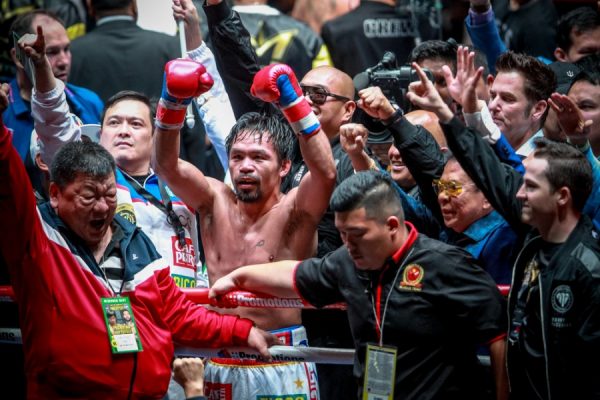
I honestly believe we’ll never see another three-year run in boxing like this ever again. It’s literally unprecedented. The Filipino dynamo pushed the physical boundaries of the sport in this three-year period, where he walked through his competition and had the boxing world in utter amazement due to being the smaller fighter in almost every fight.
At a disadvantage in seemingly every fight–due to his lack of size, height and reach–compared to the naturally bigger opponents he faced, Manny Pacquiao constantly moved up in weight and did things the sport hadn’t seen since Henry Armstrong in the 1930s. He won world titles at 130, 135, 140, 147 and 154 pounds in this three-year stretch and cemented himself as the clear No. 1 pound-for-pound fighter. He was named Fighter of the Year in 2008 and 2009.
Think about that again: World titles won in five different weight classes. All in just three years!
That’s never happened before and probably never will again. The Pac Man didn’t just beat a bunch of stiffs either; he was beating, sometimes even KO’ing world champions and Hall of Famers in Oscar De La Hoya, Juan Manuel Marquez, Miguel Cotto, Ricky Hatton, Antonio Margarito, Joshua Clottey and David Diaz.
Pacquaio has always been willing to stand up to challenges in his career and that was never more evident than from 2008-10, where he passed with flying colors.
3. Sugar Ray Robinson (1950-52): 31-2 record with one NC (No Contest)
Figuring out what was the best three-year run in the illustrious career of the consensus best pound-for-pound fighter ever was definitely hard to pin down, mainly because there are about four-to-five runs you could make the argument for. Believe me, this was tough.
1946-48 was considered, where the pound-for-pound king went 31-0, won the world Welterweight title after years of being the best in the division, defended his title three times and beat the likes of Kid Gavilan, Tommy Bell and Sammy Angott. That might be the best version of Ray Robinson.
1942-44 was a swell choice as well. As a young fighter building his way to the top of the Welterweight division and being denied a title shot in this period, Robinson went 24-1, won Fighter of the Year in 1942 and beat fellow Hall of Famers Jake LaMotta, Henry Armstrong, Sammy Angott, Marty Servo and Fritzie Zivic along the way.
At the end, I settled on Robinson’s run from 1950-52. In 1950, he went 20-0 and continued to dominate the Welterweight division, defending his title once. Robinson would move up to 160 pounds and in 1951, captured the world Middleweight title from longtime rival Jake LaMotta in the well-known St. Valentine’s Day Massacre fight.
Later in the year, he lost the title to Middleweight great Randy Turpin and then regained the title back from Turpin in a rematch. Robinson won Fighter of the Year honors in ’51.
1952 would serve as a year where Robinson defeated more heavy hitters in Carl “Bobo” Olson (for a second time in three years) and Rocky Graziano to defend his Middleweight crown, then went for the Light Heavyweight title against champion Joey Maxim but collapsed in the 13th round (while up on all three judges’ scorecards) due to exhaustion suffered because of the 103 degree heat in New York’s Yankee Stadium. He retired for the first time after this fight with a 131-3-2 (1) record.
Being a Welterweight champion, a Middleweight champion and almost a Light Heavyweight champion (should have been) all in a three-year span, while being the best fighter in the world, is one special run for the history books.
2. Muhammad Ali (1973-75): 9-1 record
Muhammad Ali’s career can be divided into two chapters: pre-boxing exile and post-boxing exile. They’re two stages of Ali’s career that when combined create probably the greatest resume ever produced by any boxer of any weight division in the history of the sweet science.
When examining which three-year run best suited the most skilled and athletic Heavyweight we’ve ever seen, I can’t blame pundits for bringing up 1964-66. Believe me, I came close to picking that run.
It’s plainly Ali at his apex. One can argue no Heavyweight fighter has ever looked that untouchable over a period of time than Ali did in those three years. He went 8-0, became the Heavyweight champion of the world at age 22 by defeating big, bad Sonny Liston and made seven-consecutive title defenses.
Yet, my choice was his 1973-75 run, where this wasn’t the best version of Ali (still great), but when it was all said and done, stood as the cream of the crop in the division and in the sport. It was in this time where Ali was defeating opponents with more will than skill, mind over matter, and exulting the highest of ring IQ, spirit and fearlessness.
After suffering his first loss to Joe Frazier in 1971s Fight of the Century, Ali worked himself back to the top. Following losing to the then quite-unknown Ken Norton in 1973, he went onto collect wins over Norton (in a rematch), hard-cracking Ron Lyle and battle-hardened Chuck Wepner. Still it was the calendar year of 1974 that was his most monumental.
In ’74, Ali defeated Frazier in a rematch to set up a title shot against the indomitable, Heavyweight champion George Foreman, where he mustered a defying-the-odds win to seize the Heavyweight title for a second time. If that wasn’t enough, in 1975, Ali demonstrated plenty of heart and guile in his Thrilla in Manilla victory over Frazier, recognized as the greatest boxing fight of all-time. Ali picked up Fighter of the Year in 1974 and 1975.
If we were unsure where Ali stood in the annals of prizefighting from ‘64-66, then the historical significance of his feats from ‘73-75 convinced the boxing world he really was The Greatest.
1. Henry Armstrong (1937-39): 54-1 record
Nothing quite measures up to this run and nothing likely ever will.
If you sit back and deeply think about it, Henry Armstrong might be the only boxer in history that can legitimately claim to be a top-five fighter ever in three different weight classes.
Let that sink in.
In my humble opinion, the greatest accomplishment in boxing history was fulfilled by Armstrong in the period of 1937 to 1939 (which interestingly enough, coincides with Joe Louis’ 1937-39 run I have on this list) when he became the first-and-only fighter to hold world titles in three different weight classes (Featherweight, Lightweight, Welterweight) simultaneously.
Try coming up with boxing’s best two-year run ever and Armstrong’s ‘37-38 would certainly qualify.
Want the two best calendar years in boxing history…and his 1937 and 1938 years would be pretty hard to top.
The 5’5″ Armstrong’s style was to create non-stop chaos and havoc in the ring, with his greatness first being shaped at 126 pounds. In 1937, Armstrong compiled a 27-0 record with 25 wins being by knockout or technical knockout. Later in October he won the world Featherweight title from Petey Sarron and was awarded Fighter of the Year. He didn’t stop there.
In 1938, already the Featherweight champion, Armstrong added a world Welterweight title in May (defeated Barney Ross, boxing’s third ever triple champion) and a world Lightweight title in August (defeated all-time Lightweight Lou Ambers) to his collection. He went 14-0 that year, including wins over Hall of Famers Chalky Wright, Ceferino Garcia and Baby Arizmendi.
By the end of 1938, Homicide Hank was a world champion in three of the overall eight weight classes, at a time when there was only one champion per division.
Armstrong continued his assault on the sport in 1939, where his focus shifted to ruling the 147 pounds division. With his Featherweight title vacated and then dropping a decision to Ambers in a Lightweight title rematch that August, Armstrong went 13-1, made 11 consecutive Welterweight title defenses (a streak that would eventually extend to a division record 19 successful title defenses) and steadied stamping his name in the boxing archives.
The greatest three-year run in boxing history belongs to Henry Armstrong. Try topping that.
Honorable Mention: Roberto Duran- 1976-78, Joe Frazier- 1969-71, Barney Ross- 1933-35, Roy Jones, Jr.- 1994-96, Alexis Arguello- 1978-80, Jack Johnson 1908-10, Jack Dempsey- 1919-21, Rocky Marciano- 1953-55, Mike Tyson- 1986-88, Carlos Monzon- 1971-73, Thomas Hearns- 1982-84, Canelo Alvarez- 2017-19, Sandy Saddler- 1948-50, Sam Langford- 1910-12, Joe Gans- 1902-04, Julio Cesar Chavez, Sr.- 1988-90, Oscar De La Hoya- 1995-97, Aaron Pryor- 1980-82, Wilfredo Gomez- 1977-79, Floyd Mayweather Jr.- 2005-07, Larry Holmes- 1980-82, Felix Trinidad- 1998-00, Vasyl Lomachenko 2016-18, Gennady Golovkin- 2013-15, Pernell Whitaker- 1990-92

